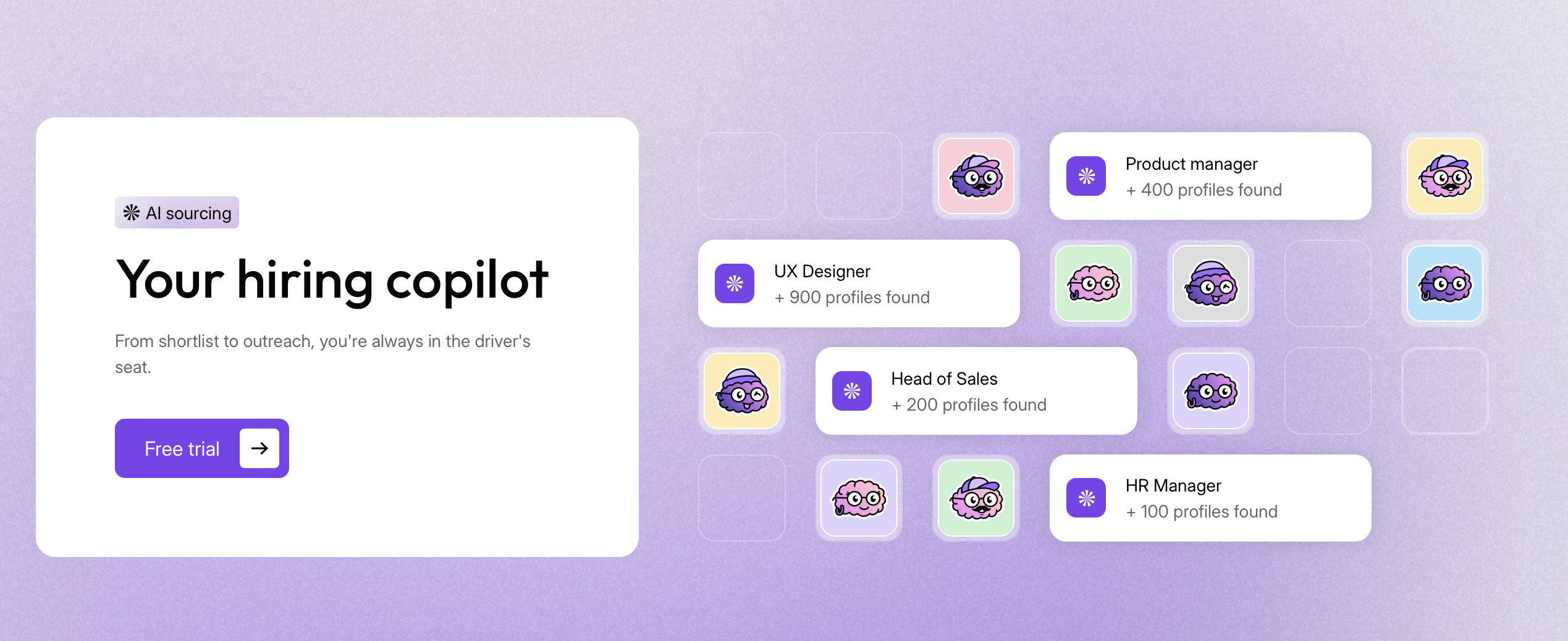What Does an HR Generalist Do? Responsibilities, Job Description & Hiring Tips (2025 Guide)
The HR generalist job description in 2025 covers far more than compliance and benefits it’s about managing hybrid teams, leveraging AI, and driving culture. This guide explains key HR responsibilities, how to write effective job posts, and how Kalent turns your HR generalist job description into real candidate conversations through contextual, AI-powered matching.
What Does an HR Generalist Do?
HR Generalists are basically the Swiss Army knives of human resources. They handle everything from onboarding to employee conflicts, compliance, benefits and salary negotiations. If you're trying to write an HR generalist job description that actually attracts good candidates, it’s important that you understand this ever-changing role.
In this article, we’ll break down what makes a great HR Generalist, what to include in your job description and why this all matters more than you might think.
What Exactly Is an HR Generalist?
Before you come to write your HR Generalist job description, you need to understand the role, as well as what makes someone successful in this position.
An HR Generalist does a little bit of everything in HR. Unlike specialists who focus on one area, such as recruitment or employee wellbeing, generalists jump between employee relations, compliance, onboarding, benefits admin and training coordination. They're essentially the glue holding HR operations together.
In startups and smaller companies, the HR Generalist might serve as the entire HR department. At bigger places, they work alongside specialists but still need that broad skillset to handle whatever comes up.
Like many other areas of recruiting, the role of an HR Generalist has changed a lot over the past few years. In 2025, people in this role are managing hybrid work policies, using AI tools for routine tasks and dealing with way more complex DEI and compliance frameworks than five years ago.
With all of this in mind, the way you write your HR generalist job description will determine who will actually apply, and who will delete your email without even reading it. It’s an unfortunate reality that in this day and age, vague job postings get vague candidates.
Clear, detailed descriptions attract people who actually know what you need and can meet your expectations.
What to Include in Your HR Generalist Job Description Roles & Responsibilities
Recruitment and Onboarding
Recruiting new talent should be a huge part of your HR Generalist job description. The person in this role will spend hours every week writing job posts, screening resumes, scheduling interviews and helping new employees through their first week. Skills might include communication, employee care, remote onboarding and managing ATS systems.
Employee Relations
HR Generalists often get involved in the messy stuff. This might include conflict resolution between team members, engagement surveys, culture initiatives and being the person everyone comes to when something's wrong at work.
Training and Development
HR Generalists will often cover training and development for new employees, which means coordinating workshops, tracking who's completed their compliance training and organizing leadership programs.
Benefits Administration
Most jobs come with employee benefits, usually overseen by HR teams. This part of the role may include enrolling people in health insurance, answering questions about 401k matching, updating salary records and being the person everyone comes to when benefits systems or tech aren’t working.
Compliance and Policy
Every year, compliance frameworks become more complicated for companies that employ people. A HR Generalist will need to stay on top of current labor laws, update the employee handbook, process FMLA requests and make sure everything is documented properly.
Modern HR Generalist job descriptions may also state that candidates should be skilled data analysts, able to track turnover rates, analyze engagement scores and spot trends before they become problems.
What Does a Good HR Generalist Job Description Look Like?
Every HR Generalist job description will look different – and this difference is key to finding candidates who match the specific requirements of the role you’re trying to fill.
A bad job description will be full of vague claims about “company culture” and wanting to find someone who is a good fit who has “great communication skills.” It may also include lots of meaningless jargon and recruitment buzzwords that don’t actually tell the candidate anything about the role.
A good HR Generalist job description will go into granular detail about the role, listing details such as company size, roles and responsibilities and specific policies and frameworks.

Here is an example of a good job description for this role:
We're looking for an HR Generalist to handle employee relations, benefits, and compliance for our Seattle-based team (100 in-office, 50 remote). You'll report to our HR Director.
What you'll actually do:
- Run recruiting for 3-5 open roles at any given time
- Handle employee conflicts and performance issues
- Manage benefits enrollment and field questions about insurance/401k
- Keep us compliant with Washington State labor laws
- Run quarterly engagement surveys
- Coordinate remote and in-person onboarding
You're probably a good fit if you've got 3-5 years doing generalist work (tech companies a plus), know your way around BambooHR or similar systems and can handle sensitive employee information.
You should also include specific salary information and any other important details the candidate should know before applying – such as if the role is hybrid or office-based, and whether the company offers flexible working. It’s also a good idea to include benefits in the HR generalist job description, such as health insurance and 401K contributions.
Do Job Descriptions Actually Matter in Recruiting?
It’s tempting to think that an HR generalist job description doesn’t really matter – that the right candidate will want to engage with you regardless, and you can tell them the important information over the phone or in person.
However, with most people applying online these days, you’re missing a trick if you don’t make your job description as appealing and informative as possible. It’s highly likely that if your job description is vague and generic, you’ll get candidates applying who don’t meet your criteria, while the right people for the role never respond to your emails.

How Kalent Turns Your Job Description Into Actual Candidates
Kalent can help you turn your HR Generalist job description into real candidate conversations across multiple platforms, all while streamlining your workflow and reducing your costs.
All you need to do is upload your HR generalist job description to Kalent, and our platform analyzes everything – responsibilities, required experience, company culture signals, specific tools – and then finds profiles that actually match.
Kalent drafts personalized messages for each candidate, which you can then review and tweak if needed, and send. The whole time, you're tracking what's working and what's not with our user-friendly dashboard.
Your HR Generalist job description serves two purposes here: It attracts candidates and gives recruiters the context they need to find better matches and write better outreach.

With Kalent, you're transforming static job posts into actual sourcing tools. Context-driven matching, multi-channel outreach that feels human, all in one place instead of juggling five platforms.
Looking to hire your next HR Generalist? Stop waiting for candidates to apply and start reaching them where they are with messages that make them want to respond.
Book a demo today and we’ll show you how to get started.





